#symbiosis
Text



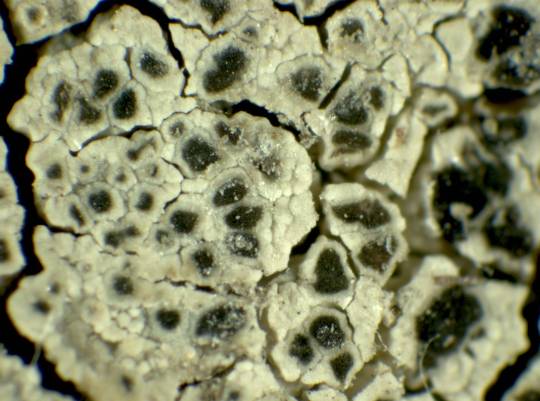






Lecanora intricata
Lichens have a few different ways to reproduce (they're just awesome like that) but most lichen symbioses include an ascomycete fungi, AKA a sac fungi. These fungi create spores in internal sacs known as asci (singular: ascus), and lichenized ascomycetes often house these sacs in their apothecia, or fruiting bodies. So you see those dark spots on the surface of our pal L. intricata here? Those are its apothecia, or its fruiting bodies, from which fungal spores will be ejected to go out and hopefully form their own little lichens someday. Pretty neat, huh? L. intricata is a crustose lichen with a verrucose (wart-like)-areolate (tile-like) thallus. It has a gray-green to yellow-green surface sitting atop a dark prothallus (a layer of fungal hyphae). It should look something like puzzle-pieces on a dark surface. It has blackish-green to brown, irregularly shaped apothecia immersed in the thallus surface. L. intricata grows on silicious rock and occasionally wood in montane, boreal, and arctic habitats.
images: source | source | source | source
info: source | source | source
#lichen#lichens#lichenology#lichenologist#mycology#ecology#biology#fungi#fungus#nature#symbiosis#symbiotic organisms#algae#the natural world#life science#environmental science#natural science#trypo#trypophobia#Lecanora intricata#Lecanora#I'm lichen it#lichen a day#daily lichen post
43 notes
·
View notes
Text
I saw this book entitled "Plants Have So Much to Give Us, All We Have to Do is Ask" by Mary Siisip Genuisz and i thought oh I HAVE to read that. The author is Anishinaabe and the book is all about Anishinaabe teachings of the ways of the plants.
Going from the idiotic, Eurocentric, doomerist colonialism apologia of that "Cambridge companion to the anthropocene" book, to the clarity and reasonableness of THIS book, is giving me whiplash just about.
I read like 130 pages without even realizing, I couldn't stop! What a treasure trove of knowledge of the ways of the plants!
Most of them are not my plants, since it is a different ecosystem entirely (which gives me a really strikingly lonely feeling? I didn't know I had developed such a kinship with my plants!) but the knowledge of symbiosis as permeating all things including humans—similar to what Weeds, Guardians of the Soil called "Nature's Togetherness Law"—is exactly what we need more of, exactly what we need to teach and promote to others, exactly what we need to heal our planet.
She has a lot of really interesting information on how knowledge is created and passed down in cultures that use oral tradition. The stories and teachings she includes are a mix of those directly passed down by her teacher through a very old heritage of knowledge holders, stories with a newer origin, and a couple that have an unknown origin and (I think?) may not even be "authentically" Native American at all, but that she found to be truthful or useful in some way. She likes many "introduced" plants and is fascinated by their stories and how they came here. (She even says that Kudzu would not be invasive if we understood its virtues and used it the way the Chinese always have, which is exactly what I've been saying!!!)
She seems a bit on the chaotic end of the spectrum in regards to tradition, even though she takes tradition very seriously—she says the way the knowledge of medicinal and otherwise useful plants has been built, is that a medicine person's responsibility is not simply to pass along teachings, but to test and elaborate upon the existing ones. It is a lot similar to the scientific method, I would call it a scientific method. Her way of seeing it really made me understand the aliveness of tradition and how there is opportunity, even necessity, for new traditions based upon new ecological relationships and new cultural connections to the land.
I was gut punched on page 15 when she says that we have to be careful to take care of the Earth and all its creatures, because if human civilization destroys the biosphere the rocks and winds will be left all alone to grieve for us.
What a striking contrast to the sad, cruel ideas in the Cambridge companion of the Anthropocene, where humans are some kind of disease upon the Earth that oppresses and "colonizes" everything else...!...The Earth would GRIEVE for us!
We are not separate from every other thing. We have to learn this. If I can pass along these ideas to y'all through my silly little posts, I will have lived well.
#symbiosis#the ways of the plants#you are a caretaker#you are not separate from every other thing#indigenous literature#books
3K notes
·
View notes
Text
symbiosis


some visible mending I did on an old flannel recently! this was fun but took me so long to convince myself to do, Im very happy with how its come out though. The lichens are oak moss, bloodstain lichen, a third thats very common in texas but i forgot the name of, and then some lovely little algae (i love algae in theory but hate it in eutrophication ;v;)
#lichen#art#traditional art#artists on tumblr#embroidery#visible mending#sustainable fashion#slow fashion#patch#biology art#fiber arts#moss#algae#symbiosis
8K notes
·
View notes
Text
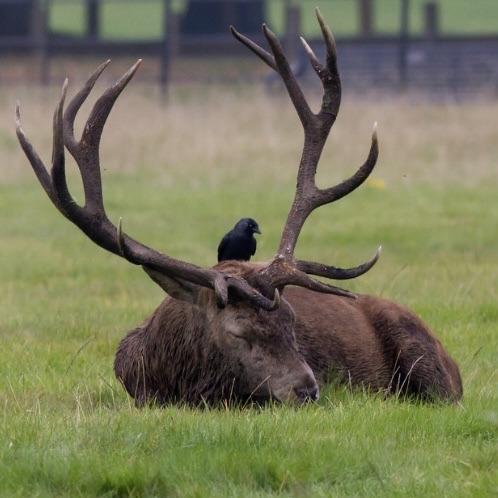

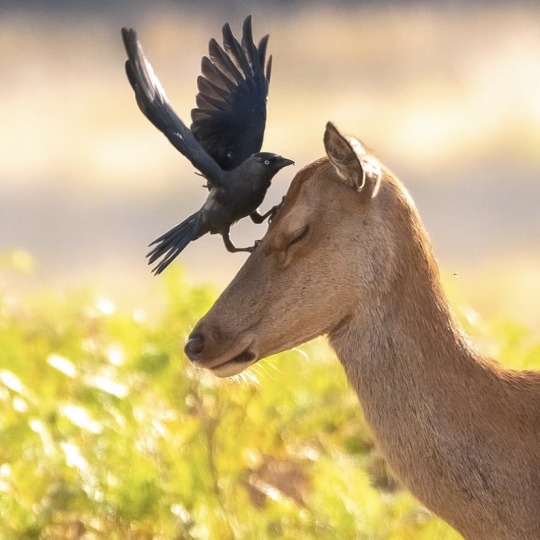
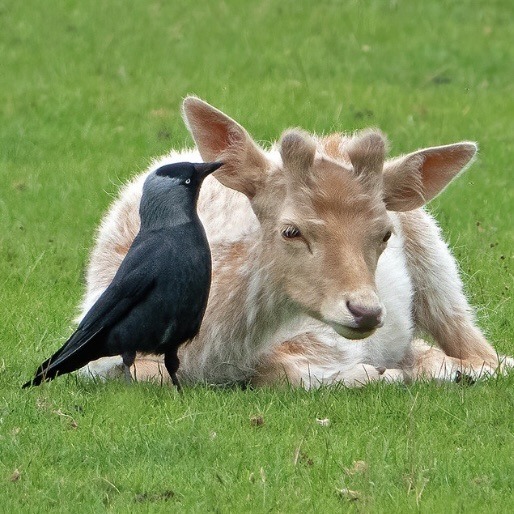
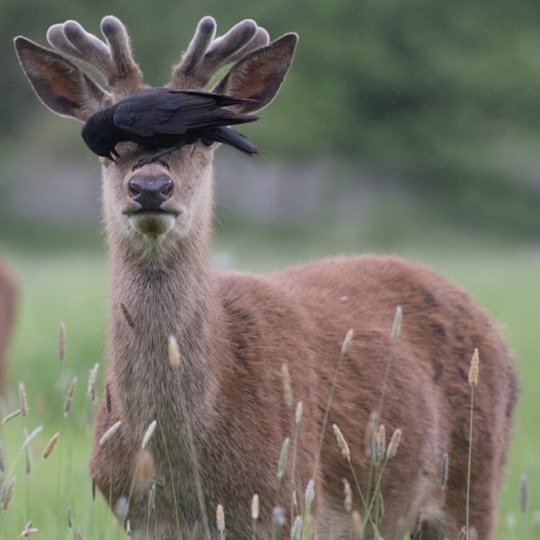
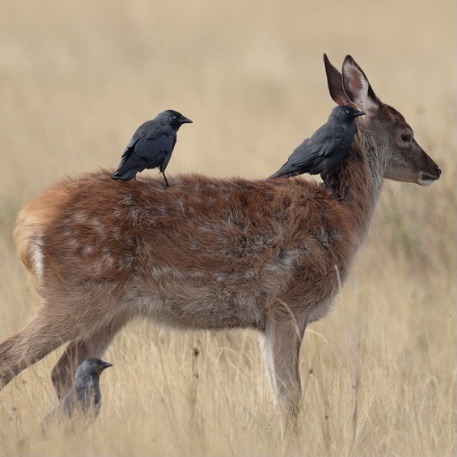

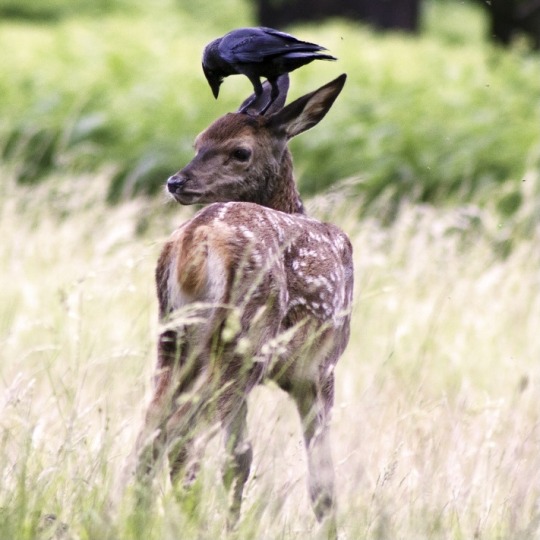
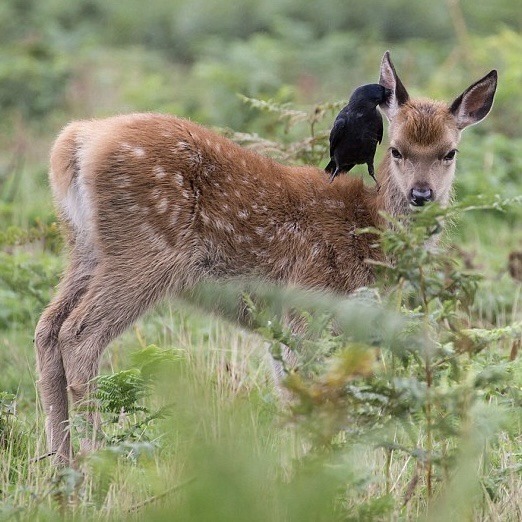
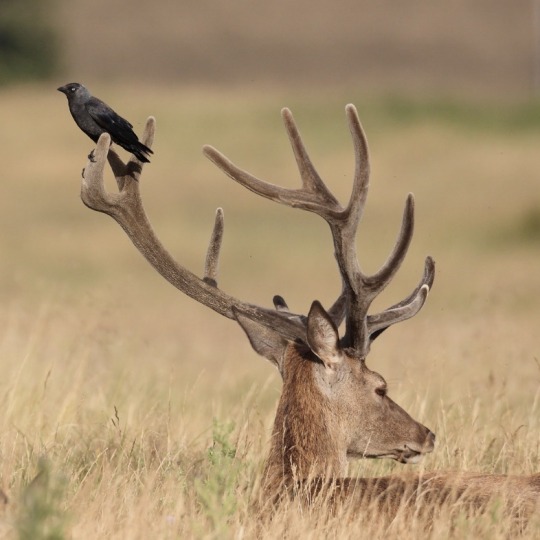
Deer and jackdaws.
The birds feed on ticks from the deer, and also assist in removing velvet from growing antlers.
#by all accounts the deer love the pampering. birds get easy food and fur for their nests#animals#deer#birds#jackdaw#jackdaws#symbiosis#1k
25K notes
·
View notes
Text
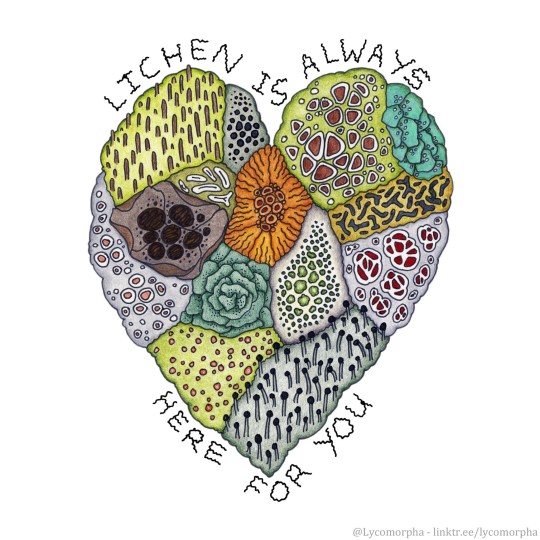
Smol reminder 💚🌿
I'm recovering from some medical treatment right now and I'm the worst patient at stopping and resting. So this is as much as note to self, to slow down and look at the lichens 😊
#lichen#lichens#lichenology#mycology#fungi#fungus#algae#symbiosis#drawing#colour pencil drawing#color pencil
740 notes
·
View notes
Text
Wet Beast Wednesday: pistol shrimp
Oh snap, it's the snapping shrimp post for Wet Beast Wednesday! Snapping shrimp or pistol shrimp are loud little critters that have evolves a very useful and fascinating tool in their pincers. Let's not waste time and shoot off to learn about these little gunslingers.
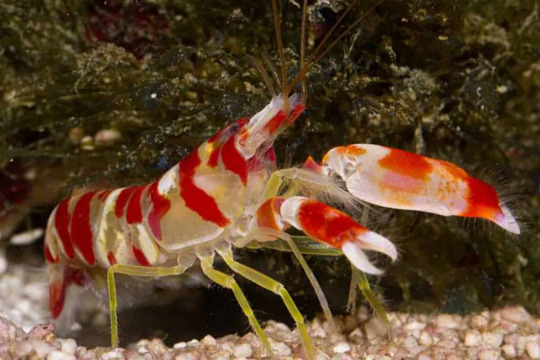
(Image: a pistol shrimp. It is a mostly white shrimp with red stripes. One of its claws is considerably larger than the other. It is standing on gravel and next to some seaweed. End ID)
Pistol shrimp are over 1,000 members of the family Alpheidae, which is part of the infraorder Caridea. This means they are true shrimp, not to be confused with superficially similar animals like brine shrimp, mantis shrimp, tadpole shrimp, and prawns. Yeah, I only recently learned that prawns and shrimp aren't a language difference between British English and American English like chips vs fries. They're not even that closely related. As true shrimp, pistol shrimp have two main body parts: the cephalothorax and abdomen, which are composed of 19 body segments. The abdomen forms a flexible tail with a fin on the end. When startled, the fin can rapidly curl under the body, propelling the shrimp backwards. Like other decapods, there are 10 limbs. The front pair of limbs have evolved into claws used to manipulate objects. The claws are the most distinguishing feature of pistol shrimp. They are asymmetrical, with one growing extremely large, over half the size of the body. The big claw has a modified version of the typical pincer. This pincer has an upper claw that can open up at a right angle. Under the claw is a pocket in the lower pincer, into which water flows. The upper pincer then slams down into this pocket, forcing the water out. The pressure of the pincer closing water in the pocket creates a cavitation bubble that is forced away from the claw at up to 26.8 meters per second. This is enough force to seriously wound small animals and hurt larger ones into leaving the shrimp alone. The cavitation bubbles can reach up to 4,427 degrees C (8,000 F) . For comparison, the surface of the sun is about 1,000 decrees (C) hotter. When the bubble pops, it creates a snapping sound that can reach 218 decibels. For comparison, most gunshots max out at around 170 db. This puts pistol shrimp is the running for the loudest ocean animals, with whales being the other main competitors. If that all sounds like a lot, the whole event happens so fast that the heat doesn't have time to affect much and the noise sounds like a moderately loud snap to us. Adults can snap their claws shut with an acceleration of up to 30 meters per second squared and juveniles can do it up to 20 times faster. The whole process takes less than a millisecond. When the cavitation bubble collapses, it can produce light. This is called sonoluminescence and nobody knows how it happens. If a pistol shrimp loses its large claw, the small claw will grow into a new large one while the missing limb will regenerate into a small claw. Adult pistol shrimp average between 3 and 5 cm long.
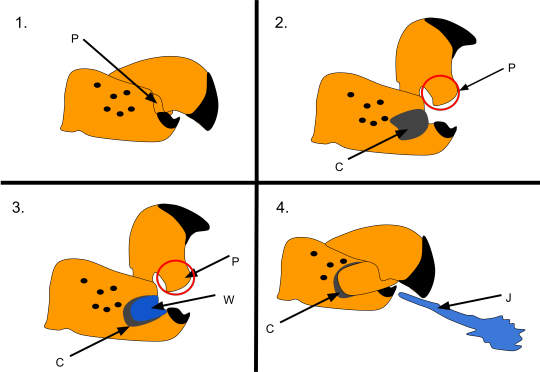
(Image: a drawing showing the process of a pistol shrimp snapping its claw. In the first panel, the claw is closed. In the second, the upper claw opens at a 90 degree angle, revealing a cavity. In the third panel, the cavity fills with water. In the final panel, the claw is closed again and a jet of water is ejected from the claw. End ID. Source: Wikipedia user Carermyers)
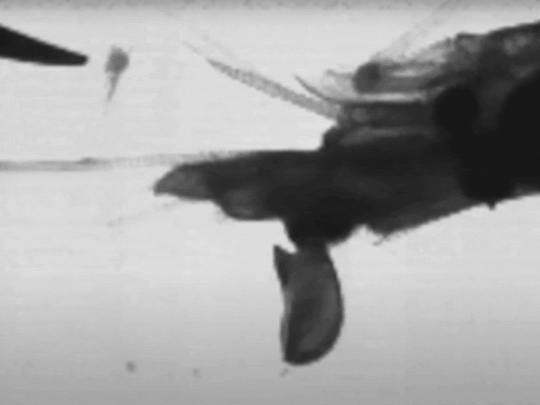
(Gif: black and white, slow-motion video of a pistol shrimp's claw snapping shut and creating a cavitation bubble. End ID. Source)
Pistol shrimp live worldwide, though most species live in tropical or temperate water. There are some cold water species and even freshwater species. Most prefer habitats where they can make burrows and where there are plenty of other animals. Coral reefs, oyster reefs, seagrass beds, mangrove groves are common habitats. Snapping is used for hunting and communication. They typically hide in burrows, waiting for fish or other small animals to pass by. When prey passes, the shrimp will snap to stun or seriously wound the prey, then drag it into the burrow. Some social species actually form eusocial hives with a single queen who produces all offspring. These shrimp are the only known marine eusocial species and all occur within the same genus (Synalpheus), though not every member of that genus is eusocial and eusociality appears to have evolved at least 3 times within that genus. It appears that a reason why only this genus developed eusociality is their larvae do not disperse, instead staying in the same area as the parents. The hives are usually located within sponges. Other social species are not eusocial, but still live together in colonies. Many less social species have formed a symbiotic relationship with gobies. Both species live in burrows, but gobies are bad at digging while the shrimp have poor eyesight. The goby will protect the shrimp while it digs a burrow, then the two live together. They will forage together, with the goby using its superior eyesight to watch for predators and warn the shrimp to get back to the burrow. Pistol shrimp are monogamous, the same pair coming back to mate over and over again (this does not apply to the eusocial species in which only the colony's queen is permitted to mate). The female is only fertile during a short period after molting. The male will stay with the female and protect her during the vulnerable period after mating and some species will remain with each other until the eggs hatch or permanently.
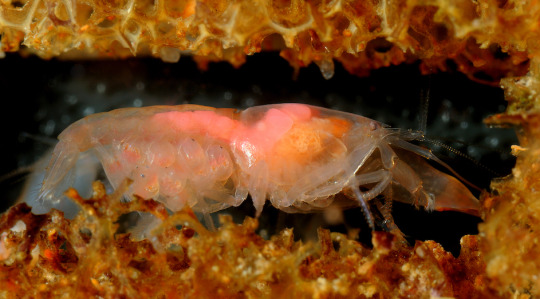
(Image: a eusocial pistol shrimp queen with eggs. Her body is translucent and multiple eggs are attached to her abdomen. The eggs look like translucent balls. The is inside of an orange sponge. End ID)
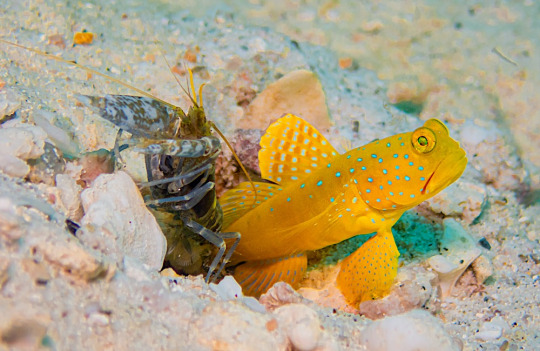
(Image: a pistol shrimp and goby emerging from a burrow in the sand. The shrimp is a mottled green and white. The body is a bright yellow fish covered with blue spots. End ID)
Pistol shrimp are a major source of noise in the places where they live. If you've ever been swimming and can hear repeated cracking noises, that may have been a bunch of pistol shrimp. Some scientists monitor the level of pistol shrimp noises as a method of monitoring the ecosystem. If the noise level drops, that is an indicator that the local ecosystem is suffering. The noise of the shrimps can get so loud that it actually interferes with sonar and forms of underwater communication. During World War II, members of the navy realized that the shrimp disrupted sonar enough to hide submarines, so they started hiding submarines near reefs with lots of the shrimp to keep them from being found by enemy subs. Weirdly not the only small marine animals to mess with submarines. I'll get the the other major one soon. The largest threats to pistol shrimp come from habitat destruction. Some species of pistol shrimp have entered the pet trade. As coral reefs, seagrass beds, and other habitats are destroyed, the shrimp that rely on them will suffer as well.

Yet another time I get to use one of these cards in a post
(Image: the Weird n' Wild Creatures card featuring pistol shrimp. End ID)
#wet beast wednesday#pistol shrimp#snapping shrimp#shrimp#decapod#crustaceans#marine biology#biology#zoology#ecology#animal facts#eusocial#symbiosis#goby#informative#image described
200 notes
·
View notes
Text

Late Triassic Spa Day for the whale-sized ichthyosaur, Shonisaurus
#art#digital art#painting#procreate#dinosaurs#illustration#paleontology#ichthyosaur#marine reptile#symbiosis
675 notes
·
View notes
Note
do mixes between mismatched hosts and helmets happen? Are they’re knight Hybrids?,both genetically and by a host and helmet of mismatched species?
(Also are the different types sub species or they’re own?)

Mismatched helmets and hosts do exist! Here's an illustrated example featuring Zetze-ka, a background character for Vivere 44, and Nalka-Imesh, a fan character by @strangecritters.
(Full answer below)
Zetze-ka is a Knight living on the Ihmna Stretch near the border between Ferhaht and Kaat. Their host Zetzeragh is a mountain host of Ferhahti origin. Souwutka is a Kaata plains helmet who was given a mountain name by their Ferhahti Order. It is often the case that a hybrid assimilated Knight takes up residency with the Order of whatever subspecies their host is.
Nalka-Imesh is a Knight with an Aikka polar host and a Fejga mountain Helmet. The names of her host and helmet originate from their respective cultures; Nalka is a singular polar name, whilst Imeshaka is a traditional mountain name. She wears a neck brace to support the extra weight of her helmet (as is common for polar hosts with non-polar helmets).
Hybrids like these are uncommon, but not unheard of. Zetze-ka's host and helmet were assimilated as a symbol of alliance between a Kaata and Ferhahti Order, rather like a Marriage of State. Other times, when a Knight has given birth and there are no other newborn hosts/helmets in their own Order to assimilate with their children, an allied Order of a different subspecies may offer their own newborns. There are many more reasons why hybrids might occur.
And yes, there are genetic hybrids as well! However, all hybrids between Knight subspecies are either sterile or inviable. Mountain and plains Knights can produce hybrids, though they will be infertile. Polar knights cannot hybridise with any other subspecies.
Mountain, plains and polar varieties are all different species of Knight.
#thank you moth for letting me draw your gal for this 💖#and ty for the ask!#my art#ask#vivere 44#knights#speculative biology#spec bio#spec evo#symbiosis#alien#art#worldbuilding
243 notes
·
View notes
Text

here's some sym
#maeellen#digital art#art#i was a teenage exocolonist#symbiosis#i was a teenage exocolonist sym#i was a teenage exocolonist fanart#iwatex#iwatex fanart
184 notes
·
View notes
Text
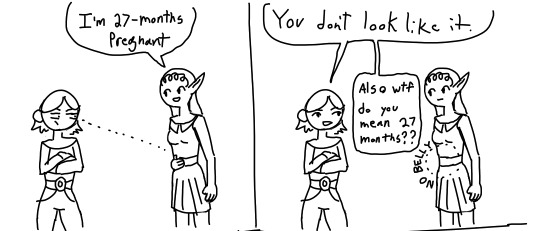
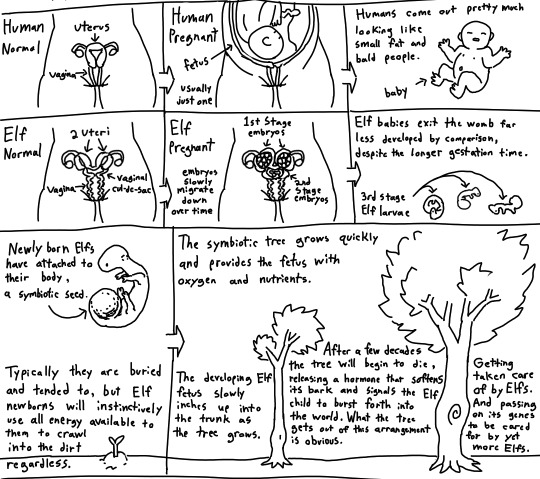

#jmc#Morphimus' Art#elf#human#pregnancy#this came to me in a dream#tree#art#fetus#pregnant#fantasy#worldbuilding#speculative biology#comic#symbiosis#these aren't specific characters this isn't a fandom thing it's just generic fantasy#high note post
152 notes
·
View notes
Text
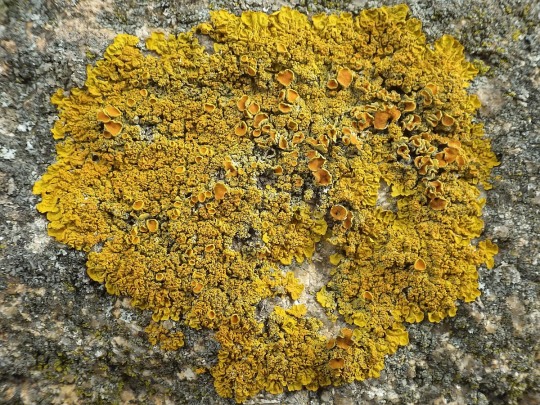

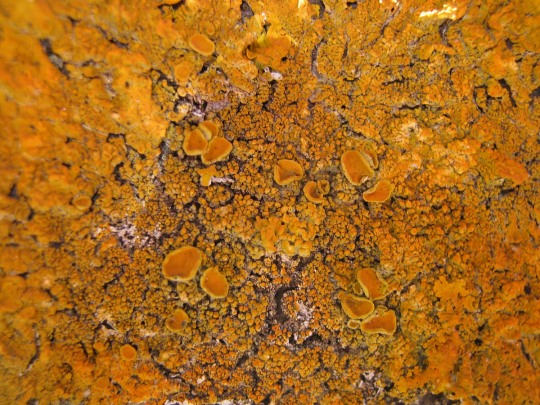
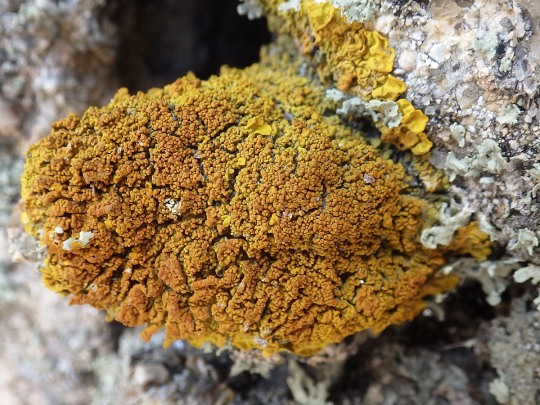

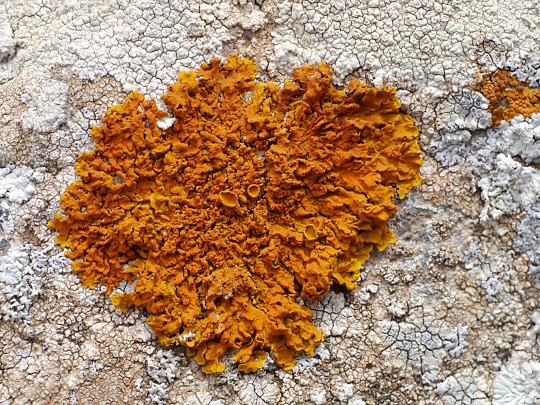



Xanthoria calcicola
This foliose lichen grows on calcareous rock and stone work (and occasionally dusty trees) in eutrophic, well-lit, mild-temperate and costal regions of Europe and the Mediterranean. It has a yellow-orange to dark orange foliose thallus forming pleated lobes growing in large rosettes up to 20 cm in diameter. The center of the rosettes are covered in knobbly warts and granular isidia, and it only rarely produces apothecia. The presence of these isidia and the lack of apothecia is the best way to distinguish this lichen from the very similar looking X. parietina which is a lot more common and often grows on bark.
images: source | source
info: source | source | source
#lichen#lichens#lichenology#lichenologist#mycology#ecology#biology#fungi#fungus#symbiosis#symbiotic organisms#algae#Xanthoria calcicola#Xanthoria#trypo#trypophobia#life science#environmental science#natural science#nature#the natural world#beautiful nature#weird nature#naturalist#I'm lichen it#lichen a day#daily lichen post#lichen subscribe#orange#orange lichen
222 notes
·
View notes
Text
I looked up some stuff about the "domestication syndrome" in animals because I read a couple times in books the idea that domesticated animals are neotenous, meaning they retain juvenile traits into adulthood. The idea being that humans have essentially created more helpless, more exploitable versions of wild animals to "dominate" and abuse nature.
I thought, "Okay, that sounds like something that couldn't be proven. How much do we even know about the juvenile brain development of, say, wild goats or boars, anyway?"
So I found this review of the literature that goes back to the fur farm fox domestication study and it's even worse than I thought: We don't even know that a 'domestication syndrome' in animals exists at all, let alone whether it is a retention of juvenile traits into adulthood.
So the fur farm fox domestication study: you may have heard of it, it claimed to have demonstrated that within a few generations, by selecting for tameness, the researchers bred "domesticated" foxes with a whole suite of traits that appear in many domesticated animals but seem unrelated to tameness, such as piebald coloration and floppy ears. The idea is that the genes for tameness and for these other traits commonly seen in domestic animals are linked, that is, an animal that inherits one is likely to inherit the other.
There's some major problems. First of all, all the foxes used in the study were from fur farms, and had already been selected for some level of docility and for coat color variation. The foxes didn't get white spots on them because they were selected for tameness, instead the pre-existing population they were selected from had those genes in it to begin with. Also, the effective population size of the foxes in the study was pretty small, meaning a small amount of genetic drift could have a big impact.
Second, there isn't very much evidence for most of the "domestication syndrome" traits in most animals. Even where the "domestication syndrome" traits can be found, they are often particular to specific breeds, and it's unclear whether they are linked to domestication as such or just the development of that specific breed.
This study only deals with a few animals, mostly small animals. It would be even more interesting to see a breakdown of even more animals (particularly more large animals). Off the top of my head, almost none of these would apply to horses, and only in specific cases would apply to cattle. Even in dogs, extreme changes in skull morphology have happened relatively recently with breeders in modern times going after extreme phenotypes.
Particular to cats: extreme skull changes and floppy ears occur as part of some "breeds" because they are specific painful genetic disorders that breeders of cats decided to perpetuate VERY recently. Scottish Folds were deliberately developed from cats that just so happened to have a disease that causes them to be in constant suffering due to their messed up joints, it's not just a variation that regularly pops up in cats to varying extents. Likewise with the smushed-face Persians. Their brains are getting squished into where their spinal cords should go because their skulls are so messed up from selective breeding for an extreme look.
What domestication means has been majorly shaken up in the past hundred years. With companion animals, breeders are in a race to make the most screwed up animal with the most extreme, striking traits possible, and with livestock animals, lots of heritage breeds with more variations have straight up gone extinct because they've been flattened into industrial monocultures to produce meat and milk as efficiently as possible, health and genetic diversity be damned.
To study domestication itself, you would have to study landrace breeds, right?
Basically there isn't one thing that domestication is
3K notes
·
View notes
Text
Rare images of a leafcutter bee sharing its nest with a wolfspider:

These photographs were taken in Queensland, Australia, by an amateur photographer named Laurence Sanders.

The leafcutter bee (Megachile macularis) can be seen fetching freshly-cut leaves, which she uses to line the inner walls of her nest. The wolfspider moves aside, allowing the bee to enter the nest, and then simply watches as the leaf is positioned along the inner wall.
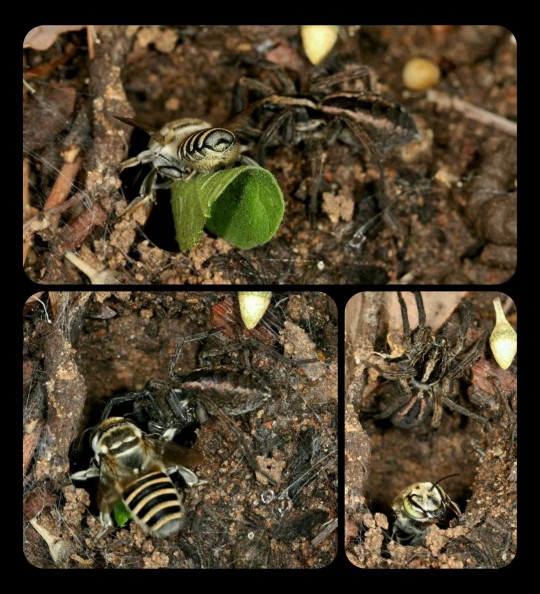
After inspecting the nest together, they return to their resting positions -- sitting side-by-side in the entryway to the nest.
The bee seems completely at ease in the presence of the wolfspider, which is normally a voracious predator, and the spider seems equally unfazed by the fact that it shares its burrow with an enormous bee.
This arrangement is completely unheard of, and the images are a fascinating sight to behold.
Sources & More Info:
Brisbane Times: The Odd Couple: keen eye spies bee and spider bedfellows in 'world-first'
iNaturalist: Megachile macularis
#entomology#arachnology#leafcutter bee#wolfspider#symbiosis#cool animals#cool bugs#bees#spiders#nature#cute#insects#arachnids#australia#props to the photographer#laurence sanders#this is a cute couple#but their babies would be terrifying
199 notes
·
View notes
Text

from the 'wholistic + abundant {lifestyle}' Pinterest board
#q#quotes#david attenborough#earth stewardship#mindsets#mindfulness#eco conscious#solarpunk#eco friendly#sustainability#holistic leveling up#leveling up#that girl#green juice girl#slow living#soft living#symbiosis#sidewalkchemistry
302 notes
·
View notes
Text
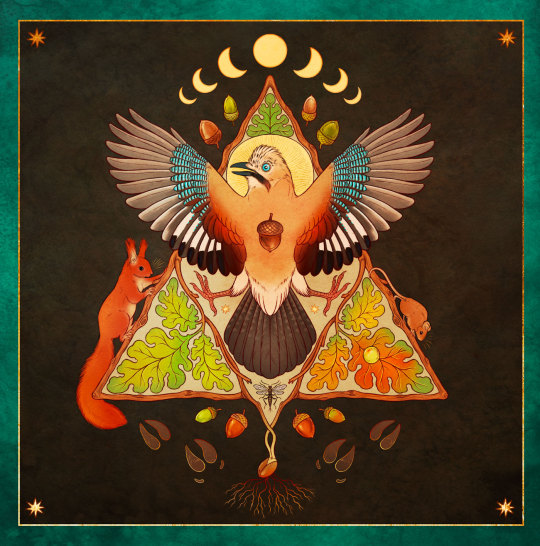
Oak Bearer
Prints: https://artofmaquenda.etsy.com/listing/1639473133/oak-bearer-lustre-print-eurasian-jay
#Eurasian jay#jay#mouse#field mouse#woods#forest#oak#tree of life#red squirrel#squirrel#woodland forest#acorn#ecology#nature#circle of life#symbiosis#artofmaquenda
302 notes
·
View notes
